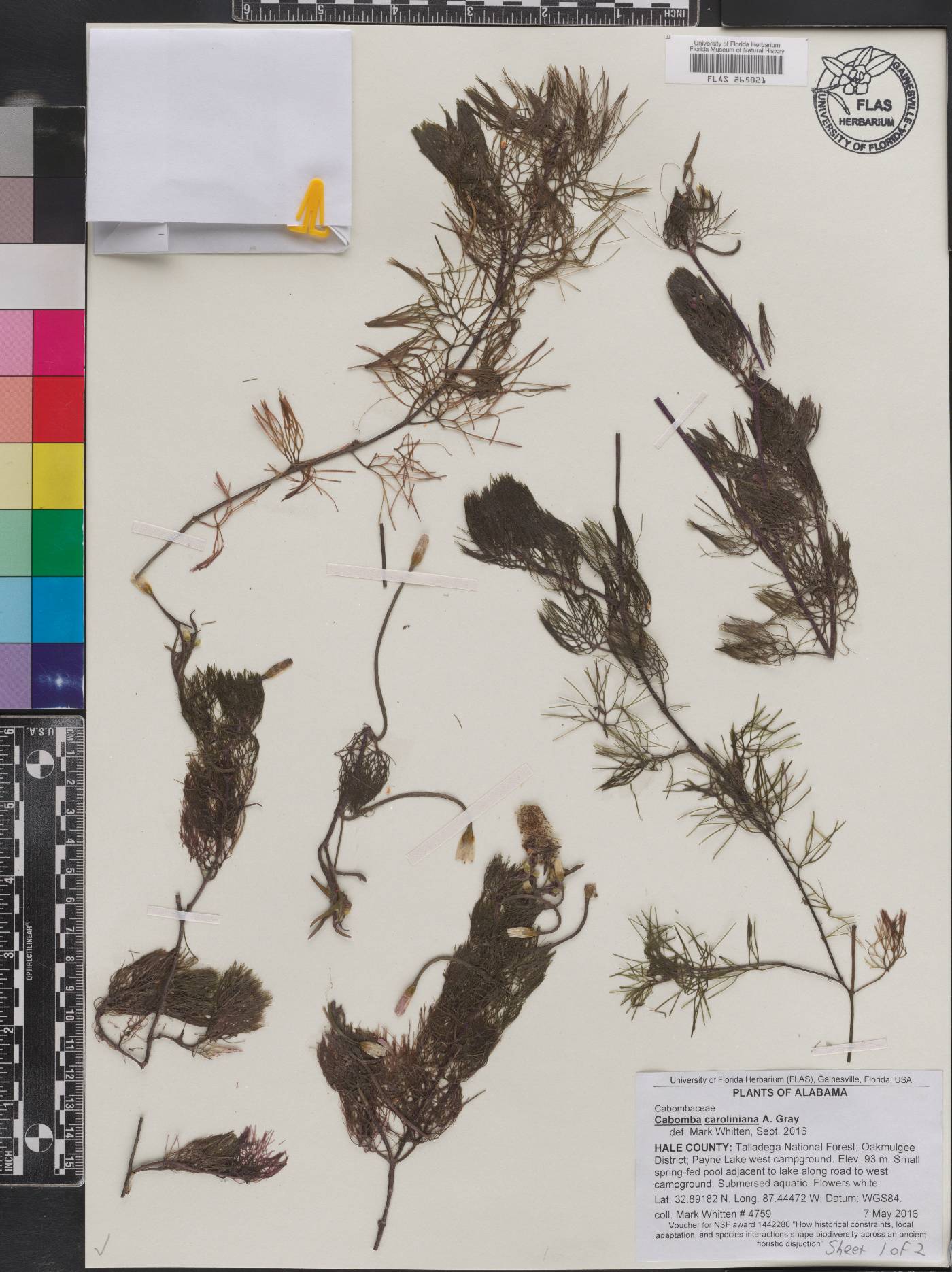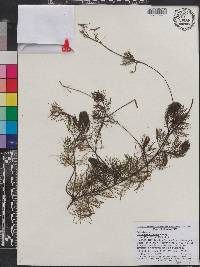|
|
|
|
Family: Cabombaceae
Carolina fanwort
|
Submersed leaves: petiole to 4 cm; leaf blade 1-3.5 × 1.5-5.5 cm, terminal segments 3-200, linear to slightly spatulate, to 1.8 mm wide. Floating leaves: blade 0.6-3 cm × 1-4 mm, margins entire or notched to sagittate at base. Flowers 6-15 mm diam.; sepals white to purplish [yellow] or with purple-tinged margins, 5-12 × 2-7 mm; petals colored as sepals but with proximal, yellow, nectar-bearing auricles, 4-12 × 2-5 mm, apex broadly obtuse or notched; stamens 3-6, mostly 6; pistils 2-4, mostly 3, divergent at maturity; ovules 3. Fruits 4-7 mm. Seeds 1-3, 1.5-3 × 1-1.5 mm, tubercles in 4 longitudinal rows. 2 n = ca. 78, ca. 104. Flowering late spring-early fall, earlier and later further south. Acidic to alkaline ponds, lakes, pools in marshes, rivers, streams, ditches, canals, and reservoirs; 0-300 m; Ont.; Ala., Ark., Conn., D.C., Fla., Ga., Ill., Ind., Ky., La., Md., Mass., Mich., Miss., Mo., N.H., N.J., N.Y., N.C., Ohio, Okla., Oreg., Pa., R.I., S.C., Tenn., Tex., Va.; s South America. Cabomba caroliniana , an important aquarium plant, is introduced in Oregon and probably in the northern part of its range where it is uncommon in several states. Formerly known from Kansas, it is thought to be extirpated there now. Although Delaware and West Virginia lie within the mapped area, I know of no collections from those states. In New England and parts of southeast United States, it is sometimes an aggressive weed. In parts of the southeastern United States, plants with purple-tinted flowers, possibly a response to some environmental factor, have been treated as Cabomba caroliniana var. pulcherrima . South American plants with yellow flowers have been called C . caroliniana var. flavida O/rgaard. The submersed leaves of Cabomba caroliniana are similar in form to those of Limnophila (Scrophulariaceae; introduced in southeastern United States). The latter has whorled leaves in contrast to the opposite leaves of Cabomba .
Stem to 2 m, branched; submersed lvs rotund, 2-5 cm wide, on petioles 1-3 cm; floating lvs few and small, linear-elliptic, 6-20 mm, commonly slightly constricted at the middle, often bifid at one end; peduncles 3-10 cm; sep and pet 6-12 mm, white with yellow base, the pet auriculate near the base; stamens 6; 2n=24. Ponds and quiet streams; N.J. to O., s. Mich., and Mo., s. to Fla. and Tex., and occasionally intr. farther north, as in Mass. and N.Y. Gleason, Henry A. & Cronquist, Arthur J. 1991. Manual of vascular plants of northeastern United States and adjacent Canada. lxxv + 910 pp. ©The New York Botanical Garden. All rights reserved. Used by permission. |




